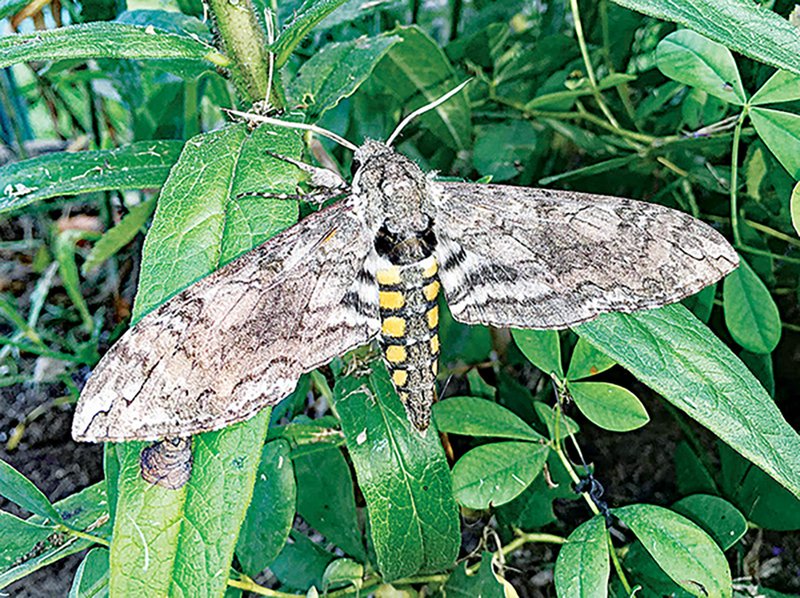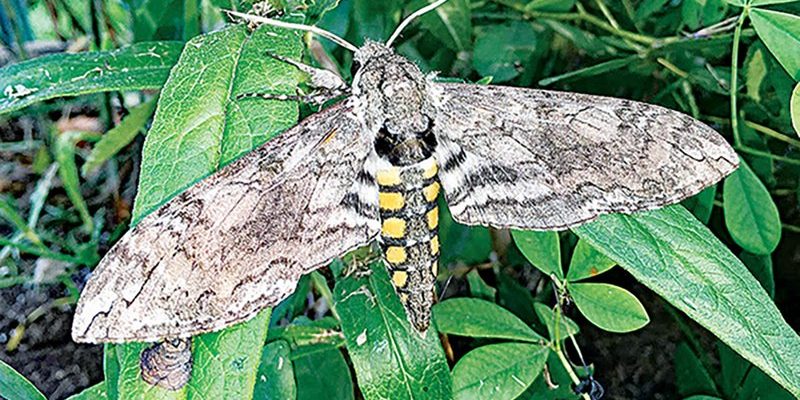
Elevating our understanding of these moths not only deepens our appreciation for nature but also sheds light on the delicate balance of ecosystems. You might be wondering, why should I care about hornworms and the moths they become? Well, knowing about these creatures can help you manage your garden better and understand the roles they play in our environment. Let’s dive into the world of hornworms and the interesting moths that eventually emerge from them.
Understanding Hornworms and Their Lifecycle
When we talk about hornworms, we’re mostly referring to two specific types: the **tobacco hornworm** and the **tomato hornworm**. These caterpillars are the larval stage of certain moths, which means they’re just one part of a larger life cycle. The typical lifecycle begins when a female moth lays eggs on the leaves of plants, usually tobacco or tomato. Soon, those tiny eggs hatch into hornworms, which begin their voracious eating spree.
During this stage, hornworms can grow rapidly, reaching sizes of up to four inches in length. They’re often green, blending in perfectly with the leaves they inhabit. This camouflage helps protect them from predators, letting them feast on the plants without too much worry. But here’s where things get interesting. Once they’ve eaten enough, hornworms stop munching and seek a safe place to pupate.
This is where their transformation into moths begins. They often bury themselves in the soil, forming cocoons where they undergo metamorphosis. The whole process is reminiscent of a teenager going through a growth spurt—awkward and a bit intense, but ultimately leading to something beautiful.
1. Tobacco Hornworm Moth (Manduca sexta)
One of the most common moths that emerges from hornworms is the **tobacco hornworm moth**, also known as *Manduca sexta*. This moth is quite striking, with a wingspan of about four to five inches. Its wings are usually a mix of brown and gray, adorned with beautiful patterns that can easily catch the eye.
After spending approximately ten days as a hornworm, the tobacco hornworm pupates into this gorgeous moth. Once it emerges, it quickly searches for nectar-rich flowers to feed on. Interestingly, these moths play a crucial role in pollination. That’s right! While they might have started as a pest in your garden, they can also help with plant reproduction.
If you’ve ever seen one of these moths zooming around your garden at dusk, you’ve gotten a glimpse of their fascinating life. They’re attracted to various flowers and can often be spotted around petunias, evening primrose, and honeysuckle.
2. Tomato Hornworm Moth (Manduca quinquemaculata)
Another common species to emerge from hornworms is the **tomato hornworm moth**, known scientifically as *Manduca quinquemaculata*. Just like its tobacco counterpart, this moth is quite large and can grow up to four inches wide. Its adult form is similar in appearance, but it features distinct patterns that help differentiate it from the tobacco hornworm moth.
The lifecycle of the tomato hornworm is practically identical to that of the tobacco hornworm. After munching through your tomato plants, they enter the pupation stage, where they undergo metamorphosis into these beautiful winged creatures. One key difference to note is that the tomato hornworm moth typically prefers to lay eggs on tomato plants, which allows future generations to thrive.
When these moths emerge, they typically do so late at night or in the early morning. They’re nocturnal flyers, buzzing around gardens and fields in search of nectar. Their presence is a reminder that even the pests in our gardens can transform into something remarkable.
3. The Role of Hornworm Moths in the Ecosystem
You might be surprised to find out that hornworm moths have a significant role in our ecosystems. While they start as destructive caterpillars, their metamorphosis into moths brings benefits. For instance, these moths are fantastic pollinators. Just like bees and butterflies, they help plants reproduce by transferring pollen from one flower to another.
Moreover, hornworm moths serve as a food source for various predators. Birds, bats, and other wildlife depend on these moths for a meal. So, while they might wreak havoc on your garden for a short time, their adult forms contribute to the larger food web.
Additionally, their larvae (the hornworms) can be used by some gardeners as a natural fertilizer. As they decompose in the soil, they enrich it, thus providing nutrients for future plant growth. So, even these hornworms have a purpose, bringing balance to the garden ecosystem.
4. Managing Hornworms in Your Garden
If you’re a gardener, you might see hornworms appearing on your plants from time to time. These little munchers can cause quite a bit of damage. But don’t worry; there are several ways to manage them without resorting to harsh chemicals.
– **Handpicking:** One of the simplest methods is to inspect your plants regularly and pick the hornworms off by hand. It sounds tedious, but it can be quite effective.
– **Companion Planting:** Consider planting herbs and flowers that repel hornworms. For instance, marigolds and basil can keep these caterpillars at bay.
– **Natural Predators:** Another method is to attract natural predators. Birds and parasitic wasps love to snack on hornworms. You can encourage them to visit your garden by creating a friendly habitat.
– **Organic Insecticides:** If the infestation is severe, you might look into organic insecticides containing Bacillus thuringiensis (Bt). It’s a natural bacteria that specifically targets hornworms without harming beneficial insects.
Keeping an eye on your garden and taking proactive measures can save your plants while also allowing you to appreciate the hornworms’ transformation into beautiful moths.
5. Fun Facts About Hornworm Moths
Hornworm moths have some pretty cool characteristics that you might not know about. Here are a few fun facts:
– **Incredible Flyers:** They’re known for their impressive flying abilities. Some species can hover like a hummingbird while feeding on nectar, making them agile and efficient pollinators.
– **Attracting Moths:** These moths prefer certain colors and scents. For example, they are particularly attracted to white, yellow, and lavender flowers.
– **Lifespan:** After emerging from their cocoons, these moths typically live for about one to two weeks. During this brief period, they focus primarily on mating and searching for nectar.
– **Camouflage:** While they’re striking as adults, their larvae—hornworms—are also masters of disguise. Their green coloration helps them blend in beautifully with the foliage, protecting them from predators.
So, the next time you see a hornworm in your garden, think about the transformation it will undergo and the beautiful moth it will become!
The journey of hornworms from pesky garden pests to stunning moths is a captivating transformation filled with ecological significance. From the tobacco and tomato hornworm moths to their roles in pollination and the ecosystem, there’s much to appreciate about these creatures. Educating ourselves about these shifts in life cycles not only helps us manage our gardens better but also fosters a deeper respect for nature and its intricacies.
By understanding these common moths that emerge from hornworms, we can embrace a more holistic approach to gardening—appreciating the beauty and balance within our outdoor spaces. So, whether you find yourself battling hornworms or marveling at the moths dancing in your garden, remember that nature is full of surprises!

